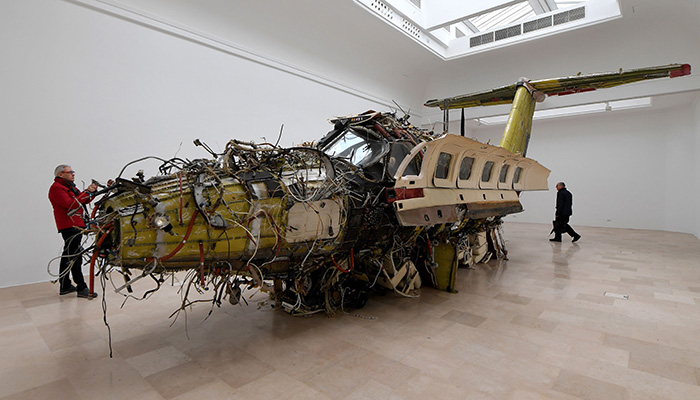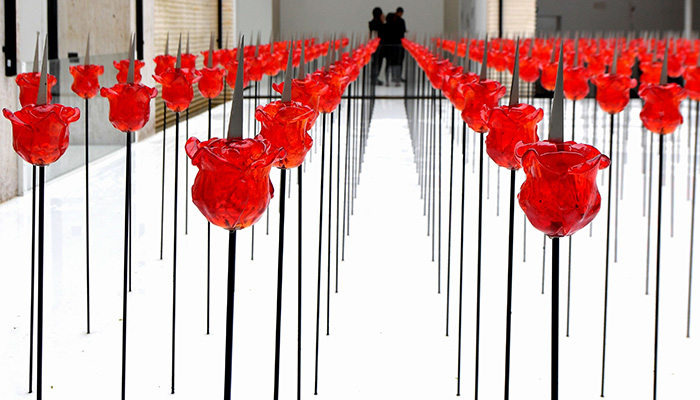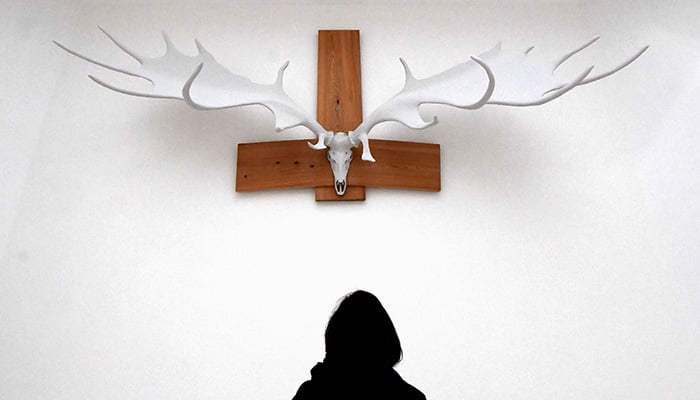Venice art Biennale gets political
May 11, 2019

VENICE: In the era of "fake news" and social media echo chambers, Venice's Biennale art fair is challenging preconceived biases by suggesting other ways of contextualising modern society's biggest issues.
"What elevates art into something special is the fact that it resists closed mentalities," the international exposition's artistic director, American Ralph Rugoff, told AFP ahead of Saturday´s opening.
The theme of the world's most prestigious art gathering is "May You Live in Interesting Times", an (apocryphal) ancient Chinese curse that Rugoff says uncannily captures the world today, as the news cycle spins from crisis to crisis.
"At a moment when the digital dissemination of fake news and 'alternative facts' is corroding political discourse and trust... it is worth pausing whenever possible to reassess our terms of reference," he said in his introduction to the 58th Biennale.
For the 2019 edition, which runs until November 24, Rugoff, director of the Hayward Gallery in London, has invited 79 artists to Italy´s City of Canals, including for the first time three non-binary artists.
'Reversing' the world
It's a contemporary exhibition: all the works have been made since 2010, and nearly half the artists are aged under 40.
New national pavilions this year include those of Ghana, Madagascar and Pakistan.
The artists, more of whom hail from Asia and the Americas than in previous editions, were commissioned to produce works for the Giardini -- gardens created by Napoleon in the 19th century -- and the Venetian Arsenal complex of former shipyards.
Poland's Roman Stanczak brings to Venice his "Flight", an aeroplane that the Warsaw-based artist has turned inside out, intended as a metaphorical call for a "reversal of the world".
"Dear", by China's Sun Yuan and Peng Yu, is a mock-up of the Lincoln Memorial's marble throne being thrashed by a rubber hose inside a glass case -- a violent and futile exercise evoking the modern-day attraction to psychotic, phallic power.
The pair, renowned for their provocative creations, are also showing "Can't Help Myself", a caged robotic arm which futilely attempts to sweep up a blood-like fluid.
Rugoff said that art "cannot stem the rise of nationalist movements and authoritarian governments in different parts of the world... nor can it alleviate the tragic fate of displaced peoples across the globe."
"But in an indirect fashion, perhaps art can be a kind of guide for how to live and think in 'interesting times'".

Rust and roses
The fate of some of those forced to flee their homes and attempt the perilous Mediterranean crossing to Europe is powerfully recalled in Swiss-Icelandic artist Christoph Buechel´s "Barca Nostra" ("Our Ship").
Buechel's centrepiece is a rusting fishing vessel that sank in April 2015, killing more than 800 migrants trapped in its hull.
Laure Prouvost, representing France, offers "Deep See Blue Surrounding You", which features an eccentric road trip film, and serves as a commentary on forced migration, human connectivity and the pollution of the world's seas.

US artist Martin Puryear, widely regarded as one of the nation´s most distinguished sculptors, presents "Liberty", a series of works which evoke a battle between darkness and light in a commentary about history and race.
And feminist Austrian avant-garde artist Renate Bertlmann brings "Discordo Ergo Sum" ("I dissent, therefore I am"), a grid of 312 hand-blown glass roses, out of which protrude razor-sharp blades, in a reference to society´s power structures.











